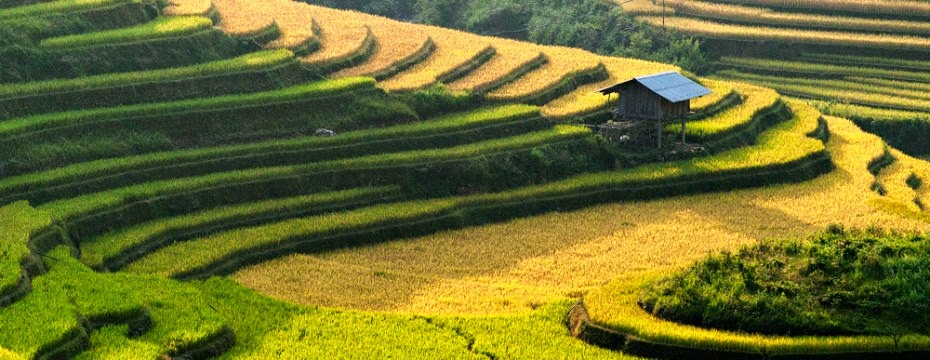Construction of the Imperial City started in 1805, under the reign of Emperor Gia Long, and was completed in 1832, under the reign of Emperor Minh Mang. Built on the northern bank of the Perfume River, the Imperial City was influenced by the style of French architect Vauban. The city comprises three sections: the Royal Citadel, the Imperial Enclosure and the Forbidden Purple City.
Royal Citadel Enclosure: The outermost boundary of the citadel has a perimeter of 9,950 m. The citadel has ten entrances: Nha Do Gate, Sap Gate, Ngan Gate, Thuong Tu Gate, Dong Ba Gate, Ke Trai Gate, Hau Gate, An Hoa Gate, Chanh Tay Gate, and Huu Gate
Imperial Enclosure (Hoang Thanh): The Imperial Enclosure of Complex of Hue Monuments Hue Imperial City is the second rampart with a perimeter of 2,450m. It is accessible through four gates: Ngo Mon to the south, Hoa Binh (Peace Gate) to the north, Hien Nhon (Humanity) to the east, and Chuong Duc (Virtue) to the west. Ngo Mon is the main entrance gate to the city and was formerly reserved for the passage of kings.
Forbidden Purple City (Tu Cam Thanh): The third and innermost fort of the royal complex has a perimeter of 1,225m and is accessible through seven gates. It was formerly reserved for the private use of the kings and their families, as well as the numerous concubines. The Forbidden Purple City is almost isolated from the outside world. Located inside the three high ramparts and deep moats, is a large cluster of smaller structures built along a main axis that runs from south to north. The first structure is Ky Dai (Flag Tower). It is followed by Ngo Mon Gate, Dai Trieu Nghi Yard, Thai Hoa Palace, Can Chanh Palace, Khon Thai Palace, Kien Trung Palace and Hoa Binh (Peace) Gate.
Ngo Mon (Gate): This three-story structure is 58m long, 27.5m wide, 17m high, and serves as the main entrance to the Imperial City. Ngo Mon comprises five gates, with the central gate being reserved for the kings only. The two adjacent gates were exclusively for court officials, and the two other outer gates were used for servants and members of the royal entourage. On top of the arch is the Five Phoenix Pavilion where the king sat during festivities. This was also where ceremonies were organized to announce the names of successful candidates of royal examinations. During the reign of the Nguyen Kings, Ngo Mon was only opened when the kings were passing by or receiving foreign ambassadors.
Palace of Supreme Harmony (Dien Thai Hoa): Thai Hoa Palace was built in 1805 according to 19th century architectural designs for palaces and temples. It is composed of two buildings, the anterior palace and the main palace, which are joined together. This is where the golden throne of the king is located. Thai Hoa Palace was the most important building of the capital used for important court ceremonies.
Dynastic Temple (The Mieu): This was one of the many shrines and temples dedicated to the kings and royal members of the Nguyen Dynasty. It was built in 1921 to worship King Gia Long and was later used to worship his successors as well. Up to now ten kings are worshipped in The Mieu. The Mieu is comprised two separate halls, each furnished with an ornamented bed made of ironwood and covered with golden glaze and red lacquer, an altar, funerary tablets and precious military weapons used for worshipping purposes. This was where the court organized grand funeral services headed by the late king's successor. The Temple is said to be the largest shrine of this kind ever built in Viet Nam.
Nine Dynastic Urns: The Nine Dynastic Urns were cast between 1835 and 1837, and weigh between 1,900 to 2,601kg each. The whole row of urns represents the power and stability of the Nguyen Dynasty. These urns are the greatest achievements of the 19th century bronze casting in Viet Nam. Traditional ornamentation was chiselled on the sides of the urns, each dedicated to a particular emperor. The 17 designs, based on classic motifs, include the sun, the moon, clouds, mountains, rivers, and scenes from everyday life. Many consider the nine urns to be a real encyclopedia of the landscapes, farm products, and animals of Viet Nam.
Pavilion of Splendour (Hien Lam): Hien Lam Pavilion is a memorial pavilion built to remind younger generations of the merits and contributions of members of the Nguyen Dynasty. Like the Nguyen Kings who were worshipped in The Mieu, other memorable people and mandarins were worshipped in the two halls located on either side of Hien Lam Pavilion. Hien Lam Pavilion was built within the site of The Mieu and was made of wood. The three-story building, which is 25m high, is the tallest building in the whole Imperial Enclosure.
Royal Residence (Cung That): Cung That was reserved for the private use of kings and their families. This area was an important component of the Hue Imperial City, which included several palaces: Can Chanh Palace (King's Residence), Khon Thai Palace (Queen's Residence), Dien Tho Palace (King's mother's Residence), and Truong Sinh Palace (King's paternal grandmother's Residence). Unfortunately, most of the palaces were destroyed in the wars, with the exception of the Dien Tho and Truong Sinh Palaces.
Dien Tho Palace was built in 1804. A special feature of this architectural structure is the roofed corridor that links Dien Tho Palace to the king's residence to facilitate the King's visits to his mother. It was restored as its old design.
Complex of Hue Monuments Hue Imperial City.

























